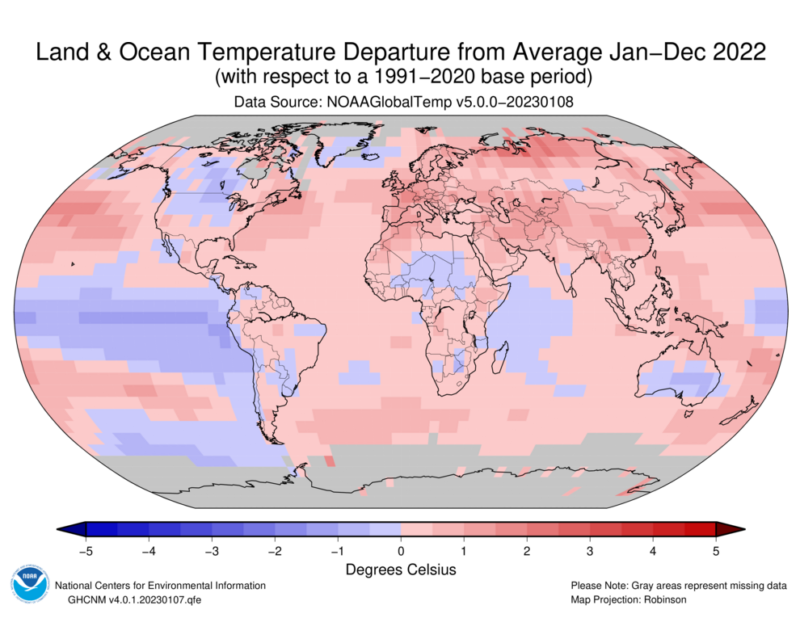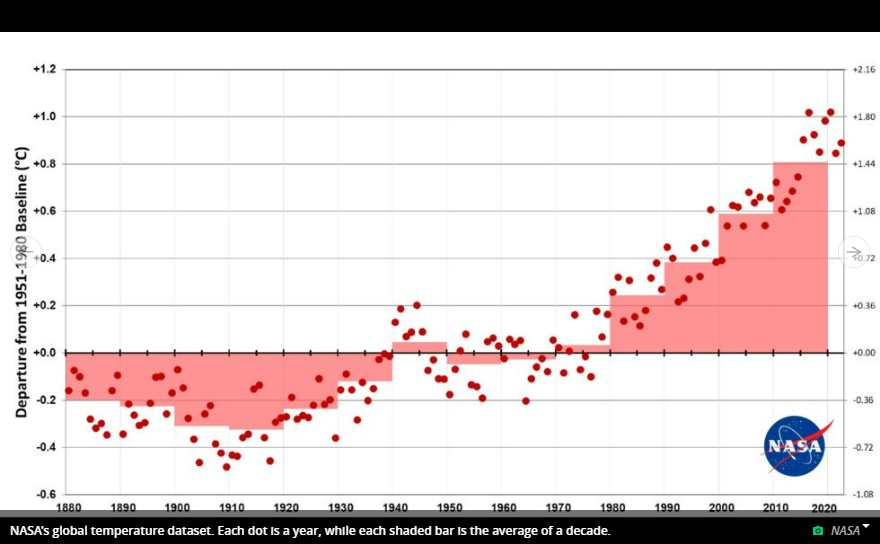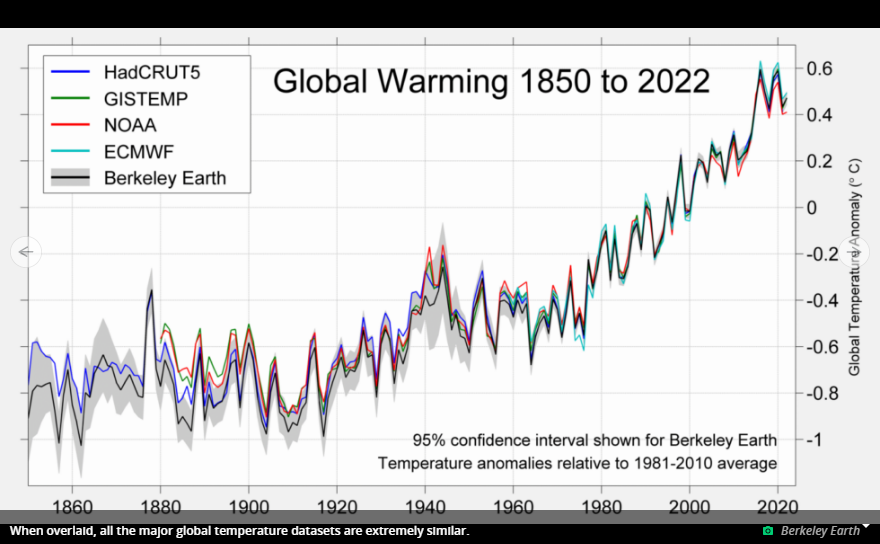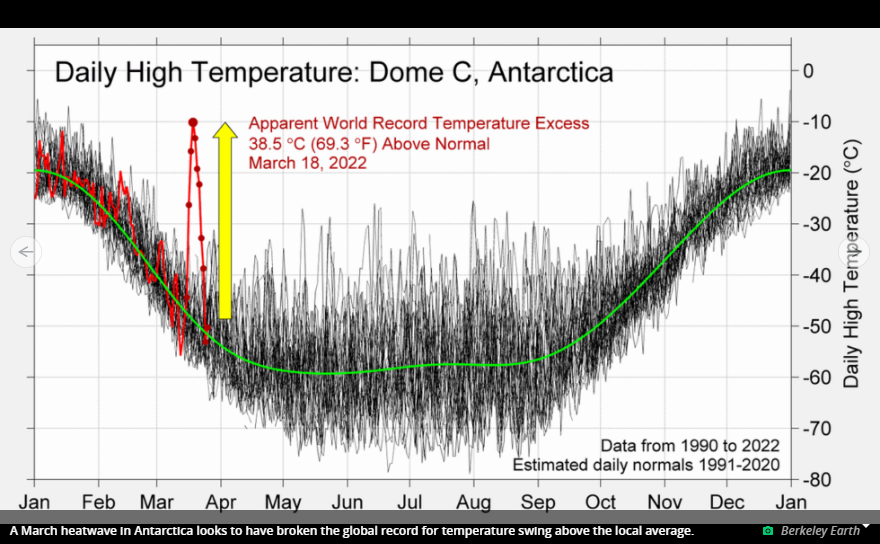Final tallies contain no surprises—it was a warm one.

They say history repeats, but usually they don’t mean it quite this literally. The global average surface temperature in 2021 ended up ranking fifth warmest or sixth warmest, depending on the dataset. We now have the tally for 2022—and it’s the new fifth or sixth warmest, depending on the dataset.
Each year in mid-January, various centers that manage global temperature datasets release their results for the previous year. Because each group pulls from a slightly different collection of weather stations and uses a slightly different calculation process, they don’t get exactly the same numbers. The big picture is identical, but since just 0.01°C can separate years in the ranking, those small differences can alter the order.
In the European Copernicus ECMWF dataset and the Berkeley Earth dataset, 2022 is the fifth warmest in the global instrumental record going back to the mid-to-late 1800s. Meanwhile, the National Oceanic and Atmospheric Administration and UK Met Office datasets pin it at No. 6, just below 2015 instead of just above it. NASA’s dataset has it tied with 2015 for fifth warmest. The total heat energy in the ocean, on the other hand, reached a new record. Over 90 percent of the total heat trapped by greenhouse gas emissions has gone into the oceans, and this value varies less from year to year.
There is nothing surprising about this. Berkeley Earth and NASA Goddard Institute for Space Studies Director Gavin Schmidt published predictions last year that 2022 was most likely to come in just slightly warmer than 2021.
Why were they able to do that? And why did 2022 end up where it did? The answer to both is that two factors tell you most of what you need to know about global temperature—the human-caused warming trend and the slow oscillation of La Niña and El Niño conditions in the Pacific Ocean.
This sloshing of surface water across the equatorial Pacific, with the wind sometimes piling up warm water on the western side (La Niña) and sometimes allowing it to stretch back across to the eastern side (El Niño), causes much of the year-to-year wiggling of average surface temperature. We’ve now been in a La Niña phase since late 2020, which has held the global average down—though this was the warmest of any La Niña year. These conditions can be forecast months ahead because they change slowly, which gives you a decent idea of how the global average will evolve.





Berkeley Earth notes that this year was the new record warmest over 8.5 percent of the area of the Earth, which happens to cover some 850 million people. The well-publicized Western European heatwaves occurred as part of the warmest summer—and year—on record in many places there, for example. Pakistan, which suffered extreme spring heatwaves followed by extreme flooding, didn’t quite set a new record for annual temperature, but neighboring Afghanistan did.
In the United States, 2022 was about the 18th warmest year on record. There were 18 weather disasters that exceeded $1 billion in (inflation-adjusted) damage, though—the third-worst tally going back to 1980.
Looking ahead, expectations are actually also similar to last year. The forecast is trending toward neutral conditions (in between La Niña and El Niño) by late spring. Last year, La Niña returned soon after, so the impact was small, but sustained neutral conditions would boost 2023 a bit above 2022 in the ranking. And if it fully transitions over to El Niño in the fall, the odds of 2024 setting a new record would then be pretty strong.
The climate system is complex enough that atmospheric temperatures wobble around a bit from year to year, but the human-caused warming trend is steadily lifting the baseline. That will remain true as long as we keep increasing the concentration of greenhouse gases in the atmosphere.
Wobbles or not, the eight warmest years in the instrumental record are the previous eight years. All eight were more than 1°C above preindustrial times, and we are drawing nearer to the 1.5° and 2° C marks that international negotiations have focused on keeping us below.
- aum
-

 1
1




Recommended Comments
There are no comments to display.
Join the conversation
You can post now and register later. If you have an account, sign in now to post with your account.
Note: Your post will require moderator approval before it will be visible.